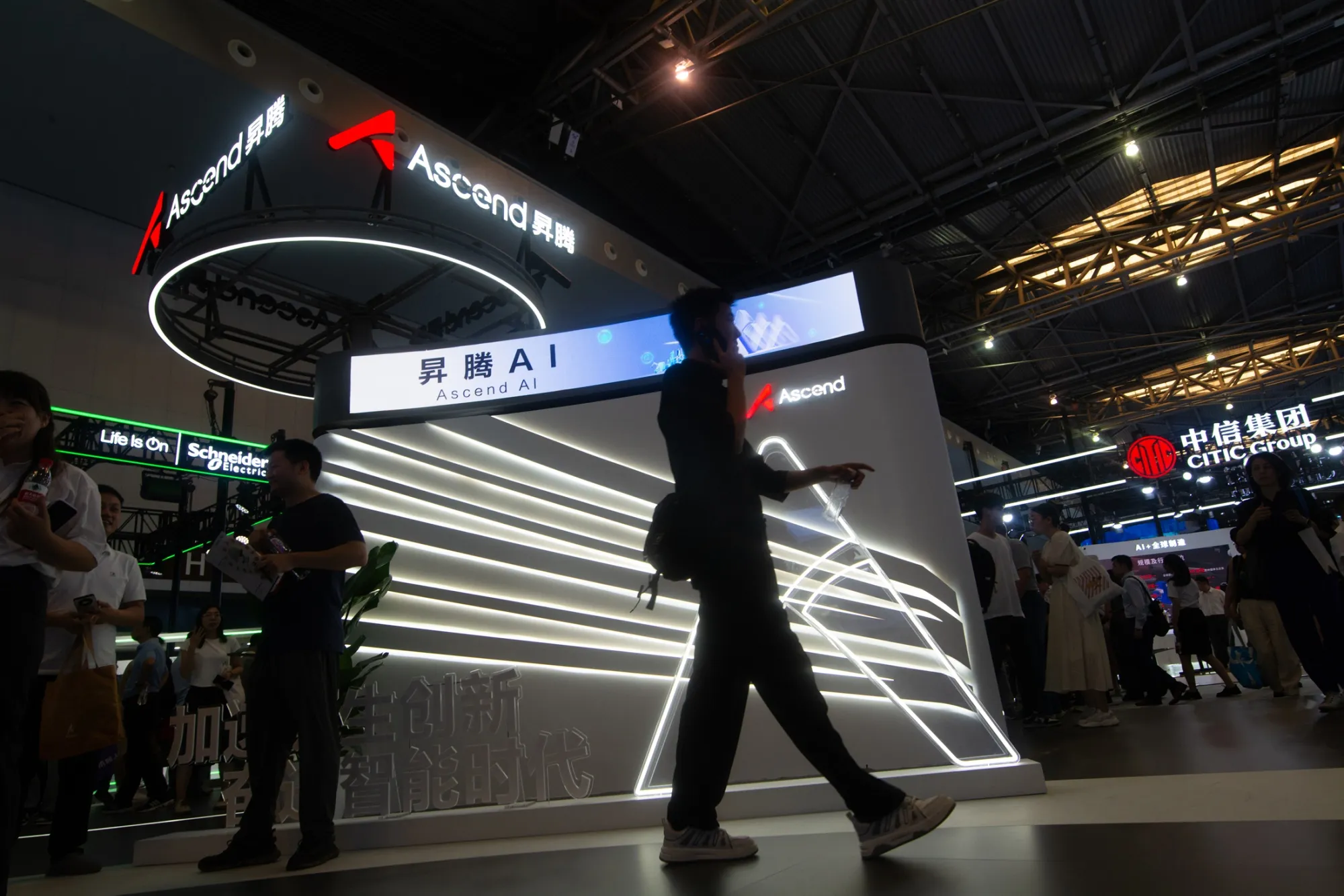(High Bandwidth Memory)
Huawei to Double Output of Ascend AI chips in 2026; OpenAI orders HBM chips from SK Hynix & Samsung for Stargate UAE project
With sales of Nvidia AI chips restricted in China, Huawei Technologies Inc. plans to make about 600,000 of its 910C Ascend chips next year, roughly double this year’s output, people familiar with the matter told Bloomberg. The China tech behemoth will increase its Ascend product line in 2026 to as many as 1.6 million dies – the basic silicon component that’s packaged as a chip.
Huawei had struggled to get those products to potential customers for much of 2025, because of U.S. sanctions. Yet if Huawei and its partner Semiconductor Manufacturing International Corp. (SMIC) can hit that ambitious AI chip manufacturing target, it suggest self sufficiency which will remove some of the bottlenecks that’ve hindered not just its AI business.
The projections for 2025 and 2026 include dies that Huawei has in inventory, as well as internal estimates of yields or the rate of failure during production, the people said. Shares in SMIC and rival chipmaker Hua Hong Semiconductor Ltd. gained more than 4% in Hong Kong Tuesday, while the broader market stayed largely unchanged.

Huawei Ascend branding at a trade show i China. Photographer: Ying Tang/Getty Images
Chinese AI companies from Alibaba Group Holding Ltd. to DeepSeek need millions of AI chips to develop and operate AI services. Nvidia alone was estimated to have sold a million H20 chips in 2024.
What Bloomberg Economics Says:
Huawei’s reported plan to double AI-chip output over the next year suggests China is making real progress in working around US export controls. Yet the plan also exposes the limitations imposed by US controls: Node development remains stuck at 7 nanometers, and Huawei will continue to rely on stockpiles of foreign high-bandwidth memory amid a lack of domestic production.
From Beijing’s perspective, Huawei’s production expansion represents another move in an ongoing back-and-forth with the West over semiconductor access and self-sufficiency. The priority remains accelerating indigenization of critical technologies while steadily pushing back against Western controls.
– Michael Deng, analyst
While Huawei’s new AI silicon promises massive performance gains it has several shortcomings, especially the lack of a developer community comparable to Nvidia’s CUDA ecosystem. A Chinese tech executive said Nvidia’s biggest advantage wasn’t its advanced chips but the ecosystem built around CUDA, its parallel computing architecture and programming model. The exec called for the creation of a Chinese version of CUDA that can be used worldwide.
Also, Huawei is playing catchup by progressively going open source. It announced last month that its Ascend and AI training toolkit CANN, its Mind development environment and Pangu models would all be open source by year-end.
Huawei chairman Eric Xu said in an interview the company had given the “ecosystem issue” a great deal of thought and regarded the transition to open source as a long-term project. “Why keep it hidden? If it’s widely used, an ecosystem will emerge; if it’s used less, the ecosystem will disappear,” he said.
………………………………………………………………………………………………………………………………………………………………………
At its customer event in Shanghai last month, Huawei revealed that it planned to spend 15 billion Chinese yuan (US$2.1 billion) annually over the next five years on ecosystem development and open source computing.
Xu announced a series of new Ascend chips – the 950, 960 and 970 – to be rolled out over the next three years. He foreshadowed a new series of massive Atlas SuperPoD clusters – each one a single logical machine made up of multiple physical devices that can work together – and also announced Huawei’s unified bus interconnect protocol, which allows customers to stitch together compute power across multiple data centers.
Xu acknowledged that Huawei’s single Ascend chips could not match Nvidia’s, but said the SuperPoDs were currently the world’s most powerful and will remain so “for years to come.” But the scale of its SuperPOD architecture points to its other shortcoming – the power consumption of these giant compute arrays.
………………………………………………………………………………………………………………………………………………………………………….
Separately, OpenAI has made huge memory chip agreements with South Korea’s SK Hynix and Samsung, the world’s two biggest semiconductor memory manufacturers. The partnership, aimed at locking up HBM ((High Bandwidth Memory) [1.] chip supply for the $400 billion Stargate AI infrastructure project, is estimated to be worth more than 100 trillion Korean won (US$71.3 billion) for the Korean chipmakers over the next four years. The two companies say they are targeting 900,000 DRAM wafer starts per month – more than double the current global HBM capacity.
Note 1. HBM is a specialized type of DRAM that uses a unique 3D vertical stacking architecture and Through-Silicon Via (TSV) technology to achieve significantly higher bandwidth and performance than traditional, flat DRAM configurations. HBM uses standard DRAM “dies” stacked vertically, connected by TSVs, to create a more densely packed, high-performance memory solution for demanding applications like AI and high-performance computing.
…………………………………………………………………………………………………………………………………………………………………………….
“These partnerships will focus on increasing the supply of advanced memory chips essential for next-generation AI and expanding data center capacity in Korea, positioning Samsung and SK as key contributors to global AI infrastructure and supporting Korea’s ambition to become a top-three global AI nation.” OpenAI said.
The announcement followed a meeting between President Lee Jae-myung, Samsung Electronics Executive Chairman Jay Y. Lee, SK Chairman Chey Tae-won, and OpenAI CEO Sam Altman at the Presidential Office in Seoul.
Through these partnerships, Samsung Electronics and SK hynix plan to scale up production of advanced memory chips, targeting 900,000 DRAM wafer starts per month at an accelerated capacity rollout, critical for powering OpenAI’s advanced AI models.
OpenAI also signed a series of agreements today to explore developing next-generation AI data centers in Korea. These include a Memorandum of Understanding (MoU) with the Korean Ministry of Science and ICT (MSIT) specifically to evaluate opportunities for building AI data centers outside the Seoul Metropolitan Area, supporting balanced regional economic growth and job creation across the country.
The agreements signed today also include a separate partnership with SK Telecom to explore building an AI data center in Korea, as well as an agreement with Samsung C&T, Samsung Heavy Industries, and Samsung SDS to assess opportunities for additional data center capacity in the country.
References:
https://www.lightreading.com/ai-machine-learning/huawei-sets-itself-as-china-s-go-to-for-ai-tech
OpenAI orders $71B in Korean memory chips
AI Data Center Boom Carries Huge Default and Demand Risks


